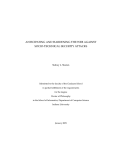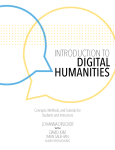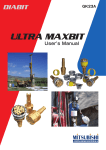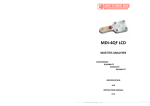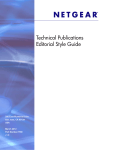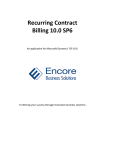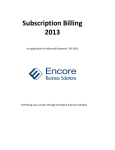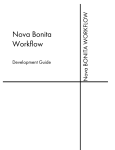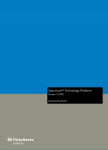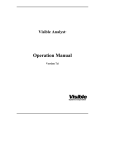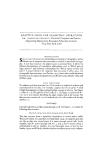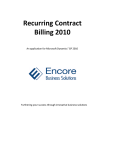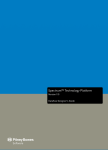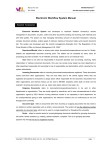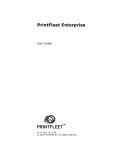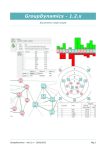Download Networked Dreams - Stephen Fortune
Transcript
Networked Dreams
Technical Report
Table of Contents
1.Summary.................................................................................................................................................5
2.Introduction..............................................................................................................................................5
2.1.Background.....................................................................................................................................5
2.2.Research.........................................................................................................................................7
2.3.Aims.................................................................................................................................................8
2.3.1.Categorising the Land of Nod................................................................................................10
2.3.2.Ambitions Vs What Was Realised.........................................................................................10
2.4.Technologies..................................................................................................................................11
2.4.1.Libraries.................................................................................................................................12
2.4.2.Development Environments..................................................................................................12
2.5.Structure........................................................................................................................................13
3.System...................................................................................................................................................13
3.1.Requirements................................................................................................................................13
3.1.1.Evolution of Requirements from Initial Brief....................................................................................13
3.1.2.Summary of Requirements Modifications..............................................................................15
3.1.3.Functional Requirements.......................................................................................................16
3.1.4. Data Requirements...............................................................................................................24
3.1.5.Performance / Response time requirement...........................................................................25
3.1.6.User Requirements................................................................................................................25
3.1.7. Environmental Requirements...............................................................................................25
3.1.8.Usability Requirements..........................................................................................................25
3.2.Design and Architecture................................................................................................................25
3.2.1.Entity Relationship Diagrams & Data Driven Development..................................................25
3.2.2.User Journey Design.............................................................................................................29
3.3.Implementation..............................................................................................................................31
3.3.1.DreamDB class......................................................................................................................32
3.3.2.User Journey.........................................................................................................................34
3.3.3.Sessions................................................................................................................................34
3.3.4.Notes on Control Flow...........................................................................................................38
3.3.5.Data Analytics & Visualisation...............................................................................................39
3.4.Testing...........................................................................................................................................42
3.5.Graphical User Interface GUI Layout............................................................................................50
3.6.Evaluation......................................................................................................................................57
4.Conclusions...........................................................................................................................................57
4.1.Web Implementation vs App Realisation.......................................................................................57
2
4.2.Implementation Reflections...........................................................................................................58
5.Further Development.............................................................................................................................58
5.1.Pragmatic Next Steps....................................................................................................................58
5.1.1.Back Ups...............................................................................................................................58
5.1.2.Robust Security.....................................................................................................................58
5.1.3.User Journey.........................................................................................................................59
5.1.4.Expanded Membership Profile Data......................................................................................59
5.2.Iterative Stages of Improvement...................................................................................................59
5.2.1.Phase 1 – Providing Network Diagram Visualisation............................................................59
5.2.2.Phase 2 – Improve Logging Experience and Incentive.........................................................60
5.2.3.Phase 3 – Trial Dream Communities.....................................................................................60
5.2.4.Phase 4 – Integrated Alarm Clock.........................................................................................60
5.3.Plug-In & App extensibility of User Contributed Data....................................................................61
5.3.1.Facebook and other social media API integration.................................................................61
5.3.2.Enhanced what were you doing before sleeping functionality..............................................62
5.4.Other Technologies........................................................................................................................62
5.4.1.Databases..............................................................................................................................62
5.5.Further Research...........................................................................................................................62
5.5.1.Analytics, Demographics and Taxonomising the Human Psyche.........................................62
6.References............................................................................................................................................64
7.Appendix................................................................................................................................................66
7.1.User Manual & Technical Manual..................................................................................................66
7.1.1.User Manual..........................................................................................................................66
7.2.Technical Manual...........................................................................................................................68
7.3.Other Materials Used.....................................................................................................................71
7.4.Original Proposal...........................................................................................................................75
7.5.Original Proposal Wireframes.......................................................................................................80
7.6.Deprecated Requirement Specification.........................................................................................87
7.7.Project Management Plan...........................................................................................................100
3
List Of Figures
Fig 1 - Quantified Self Examples
6
Fig 2 - Network Diagram Visualisation - Example
9
Fig 3 - Initial Use Case Diagram
14
Fig 4 - Revised Use Case Diagram
17
Fig 5 - part 1 of ER diagram
26
Fig 6 - part 2 of ER diagram
27
Fig 7 - Part 3 of ER diagram
28
Fig 8 - 'User Journey' Sequence Diagram
29
Fig 9 'User Journey' Flow Diagram
30
Fig 10 - Deployment Diagram
30
Fig 11 - Singleton Design Pattern
31
Fig 12 - snippet formatting function, source Includes/db.php
32
Fig 13 - snippet, comma separated values to associative array, source logdream.php
33
Fig 14 - snippet DreamDB function to handle csv associative array, source db.php
33
Fig 15 snippet, preserving user input on form refresh, source join.php
34
Fig 16 - 'User Journey' PHP Sequence Diagram
35
Fig 17 - Collaboration Diagram
36
Fig 18 - $_SESSION flow diagram.
37
Fig 19 snippet - ensure one dream per 24 hours Source: logdream.php
38
Fig 20 snippet - dynamically populate forms using jQuery & PHP source - complete.php
39
Fig 21 - SQL, create view demographics
40
Fig 22 - snippet -dynamically visualise data part 1 Source dataviz.php
41
Fig 23 - snippet -dynamically visualise data part 1 Source dataviz.php
41
Fig 24 - snippet -dynamically visualise data part 1 Source dataviz.php
42
Test Records
44- 49
GUI Illustrations
51-56
Fig 25 - Social Media Demographics
72
Fig 26 - Android App wireframes part 1
80
Fig 27 - Android App wireframes part 1
81
Fig 28 - Platform Agnostic Wireframes: sign up process
82
Fig 29 - Platform Agnostic Wireframes: sign up process complete
83
Fig 30 - Platform Agnostic Wireframes: data entry
84
Fig 31 - Platform Agnostic Wireframes: data visualisation
85
Fig 32 - Platform Agnostic Wireframes - meta categorise user tags
86
4
1. Summary
Networked Dreams is a prototype venture into my efforts to create a dream logging app.
The app aspires to maximise the potential of information visualisation to both compel users
to keep using the service and to offer users unique insight into that great unknown realm the subconscious. This report describes the implementation of a
Create-Read-Update-Delete application in the vein of the above concept and appraises
the prototypes suitability to the apps ambitions.
2. Introduction
2.1. Background
I wished to develop a dream logging app, for users to easily log their dreams, and to
provide data visualisation as a means for users to understand the connections existing
within and between their dreams.
I wished to use those visualisations and personal logging as a means into creating dream
communities linked by trends discerned from aggregate data. I am targeting self-trackers
(or Quantified Self) and lucid dreamers in particular and a causal audience curious about
their dreams.
Dreams are an aspect of peoples lives that people are always curious to learn more about.
Dream logging is an activity long undertaken by humans. For instance, there exists a 1955
microfiche digital archive of dreams: it holds the collected records of people’s inner lives:
their dreams, their life histories [Lemov, R. The Database of Dreams]. Dream Logging has
several implementations in both web and mobile app form. As such I devoted a
considerable amount of my time to researching existing applications in the field to best
determine how to distinguish my offering.
One of the more interesting developments in this area has been the overlap between
Quantified Self Communitities and Lucid Dreaming. Quantified Self designates people
5
across a wide range of demographics who use devices, spreadsheets or even humble pen
n' paper journals to note data from their life, and analyse the trends that emerge from their
tracking.
Fig 1. Left - Chris Dancy's quantifies self journaling. Right Stephen Wolframs Decade of Personal
Analytics
Selection of Quantified Self Communities
http://your.flowingdata.com/
http://daytum.com/
https://www.chartmyself.com/
https://fluxtream.org/welcome
A sample of Quantified Self Communities and Services
Lucid dreaming is a form of dreaming where the dreamer is aware that they are dreaming,
and can shape their dreams at will. It is a skill that can be cultivated (Wiseman, R. Night
School 2014), and one way to do so is to log your dreams. The more you log your dreams,
the more you remember the content of your dreams and the better able you are to lucid
dream.
The intersection of these two trends was the spur for my project. I have a long standing
6
interest in quantified self, and the pedagogical power of infographics. Quantified Self
communities believe in self knowledge through numbers. Lucid dreaming is likewise
associated with unlocking inner potential and improving self-awareness (Barrett, A Study of
Dream Incubation 1993). I wished to develop an easy to use (in terms of data entry)
application which would render the users dreams into some form of quantitative analysis. I
likewise wanted to open dreams up to data visualisation, an area which is widely regarded
as having the power to illuminate complexity in a concise immediate manner. It is my
opinion that responsible use of infographics can be a powerful aid to self-awareness.
I have covered digital technology trends for the past three years in my previous
employment, and engaged with what data & data visualisation mean to people through my
digital art practice. Creating an app that married the subjective and poetic realm of
dreaming with an ascendant means of understanding everything you do via databases and
data analytics struck me as an engaging topic.
2.2. Research
To focus the breadth of data possibly contained within any given users dream a
categorisation feature was added, which is a stipulation of any dream logged. These 'meta
categories' provide an anchor for data analytics. To establish what types of categories
users wish to label their dreams as, I researched as many of the existing web offerings for
dream journaling as possible (see section 2.3.1 Categorizing the Land of Nod).
A crucial part of making this app relevant to data analytics, as existent within the domain of
personal analytics, is providing non-dreaming data (i.e. 'waking data') to correlate with the
contents of ones dreams. The app takes account of what a given user was doing the night
before they had a dream. This is currently done as a subsequent step of any dream being
logged.
Inspiring the 'waking data' gathering was a focus on 'Time Use Research'. Time Use
Research originated in contemporary workforce management, its a means for a worker to
diagnose their work life balance. This field of research understands time as falling into the
following categories
7
1. Contracted time
2. Committed time
3. Necessary time
4. Free time
[Dagfinn Aas Time Use Studies: Dimensions and Applications, 1986]
I utilised these categories as meta-ordering principles for the options available to a user to
designate what they were doing prior to sleeping and dreaming. This is a feature which
can be elaborated upon as the project develops. It also aligns the app with the
prerogatives of a significant section of quantified self users (concerned with optimising
productivity) and also with the aspirations of lucid dreaming (to unlock ones hidden
potential).
'Time Use Research' enables my project to channel the research hypothesis 'threat
rehearsal dream hypothesis'.
The ambition is to create this project as an app - but in its current incarnation it has been
developed principally as a website - that can be accessed by any browser, mobile or
desktop. The aim is to continue building toward the mobile experience. This app needs to
compete with other dream logging apps - which all have the advantage of immediate
access because they can interacted with on a mobile device.
2.3. Aims
This app allows dream logging in a fashion that permits later elaboration by data
visualisation.
To distinguish my application and service from existing websites and apps I focused on
data visualisation and capturing data from the user related to what they did prior to
sleeping and dreaming a given dream. The latter category was supported by research into
the taxonomies of Time Use Research. Capturing what the user did prior to dreaming was
intended to aid the users self discovery and also add a powerful additional category to the
8
data analytics side of the project
Utilising visualisation sets my project aside from browser based efforts like
www.dreamscloud.com/ and www.dreamdoze.com/.. In both of these website services
'expert' interpretation is offered as a service (both www.dreamscloud.com/ and
http://www.dreammoods.com follow this model), or a 'wisdom of the crowd' approach to
interpretation is offered (http://dreamdoze.com/). My project would instead offer the power
of infographics and the ability to form communities with people who dream about similar
things as the means of interpretation. In allowing users to create micro communities of
shared dream subjects I am aiming to channel some of the 'splintered social media' that
has been evident in the preference for closed media, like Whatsapp, versus broadcast
social media - such as Facebook & Twitter.
My desire to realise this project was driven by a curiosity to see whether the sociogram
visualisation (predominant in network culture, and social media especially, which makes up
most of our digital lives) would provide an engaging window into our sleeping hours.
Fig 2 Immersion - a network diagram interface to email
I wished to explore the affordances of Network Visualisation infographics. This is because
Network Diagrams are very apt to our current state of digital technology interaction - where
9
vast amounts can be inferred about who you are based on the connections between the
metadata you produce in interaction with digital systems. It struck me that foregrounding
the data visualisation as an interface to comprehension, and using networked diagrams as
the principal visualisation metaphor was a means to distinguish my product form extant
Dream Logging offerings.
In the middle of my development it came to my attention that comparable research had
been recently completed by DARPA and Indiana University's Center for Complex Networks
and Systems Research [Varol, O Menczer, F. Connecting Dream Networks Across
Cultures 2014]. To me this is indicative that I have hit upon an area of attention to a great
many actors - academic, societal and personal.
2.3.1.Categorising the Land of Nod
Dreams are easily the most theorised area of human existence, and as such I kept a
relatively arms length approach to the detail of some theories. Instead, when designing
'keyword categories', I considered the taxonomies that already existed at a range of
websites offering similar dream logging services.
Examples of Sites Researched
http://www.dreammoods.com/dreambank/
http://dreamdoze.com/
http://www.sleeps.com/dictionary/dictionary.html
http://www.dream-analysis.com/interpretations.htm
Through a process of data trawling (please see the section on data scraping in Appendix
Other Materials Used for more) I determined 25 categories for use. I am less concerned
with these categories faithfulness to theories of dreaming (which are many and diverse,
and present in many disciplines). What is more interesting for me is providing some means
of equivalence between the activities of the dreamer before they went to sleep, and what
their dream was about. This establishes a homology between time-use research' and
'threat rehearsal dream hypothesis'.
10
2.3.2.Ambitions Vs What Was Realized
With that noted, it was not possible to implement the visualisation as desired for this
iteration. However, as noted subsequently in Section 2.1 Data Analytics & Visualisation
endeavours have been made in terms of data representation that these visualisations
could be readily implemented.
The initial aim (as illustrated in Appendix: Original Proposal, and Appendix: Original
Wireframes) was to provide this service as a mobile phone application integrated with an
alarm clock. The reason for this is that it is well researched that the moments immediately
after awakening are the most important for logging your dream. Rather than rely on long
form text the application was to expedite the entry process by means of four fields
(emotions,locations,people and objects) which could be entered visually. However as
development advanced it was clear that an android application would need to wait until a
further iteration.
The revised aim consisted of a website, accessible as mobile application. While the alarm
clock is absent, this service should still be accessible on mobile devices, thus expediting
the data entry process upon awakening. The distinguishing features of this app would be
data visualisation, waking data capture, and microcommunities made possible by
aggregate analytics. All three features would be extended to any future mobile application,
with all the affordances for augmentation said platform would afford (see Section 5 Further Developments for more on this).
2.4. Technologies
This project was realised utilising web technologies. The nature of web technology
development entailed a variety of technologies specifically PHP, HTML and HTML5, CSS,
Jquery, and Javascript. A MySQL database was utilised for the projects data requirements.
A web technologies project can run on any device equipped with internet access and a
browser.
11
MySQL was familiar to the author. Together with Apache and PHP it represents an open
source solution to hosting a web service which is incredibly ubiquitous among web hosting
providers. This ubiquity was a positive attraction to using these technologies.
HTML, HTML5 and CSS were used for presentation purposes, to style the visual
elements of the project. Ensuring as much cross device compatibility is possible through
responsive design.
PHP ran server side, performing data handling duties. All connections to the MySQL
database were made through PHP and MySQL. Any data retrieved from the database was
accessed and encoded for presentation by PHP. Use of PHP was a decision reached in
consultation with my lecturer. It also makes sense for planned (but presently postponed)
subsequent integration with Facebook API, which has excellent support for PHP given that
it originated in that language.
Combinations of client side jQuery and Javascript with server side PHP handled the data
validation portions of the website. Jquery also enables dynamic interaction with webpages
- transforming the static webpage paradigm of PHP into a dynamic one. PHP executes
server side where jQuery and javascript execute client side.
2.4.1.Libraries
Several Javascript Libraries were used for the data visualisation portion of the project.
Sigma was experimented with, but I decided to postpone representing the MySQL
database with graph abstract data types until a subsequent version. I instead utilised the
D3 javascript library. D3 stands for 'data driven documents' - it binds arbitrary (i.e.,
developer specified) data to the Document Object Model. Once bound data-driven
transformations can be executed on said data. It outputs visualisations in SVG format, by
performing HTML and CSS transformations through javascript scripting.
2.4.2.Development Environments.
12
The PHP and Javascript portions of the the project were developed within the Netbeans
IDE, which has good support for PHP, and HTML5 technologies. It's support for javascript
is less useful. With hindsight a from first principles framework focused approach
integrating these technologies would be better.
The WebFlow visual editor was used to construct the HTML and CSS for this project. It is a
browser based WYSIWYG editor, akin to Dreamweaver or Mozilla Komposer.
2.5. Structure
All imagery contained in this report likewise accompanies the submission, on the media
containing the code.
Please note that occasionally this document transforms from a default portrait orientation
to landscape, for the sake of clarity of the information presented
3. System
3.1. Requirements
3.1.1.Evolution of Requirements from Initial Brief
The realised project evolved from the initial brief according to two particular domains.
There were:
•
The initial plan for a phone app implementation,
•
The primacy of data visualisation as the main customer take-away
My initial requirements envisioned provisioning this service in the form of an android app
(the entirety of this proposal and supporting artifacts and rationale can be viewed in
Appendix: Section 7.4, and Appendix Section 7.5. The reasoning was that dream logging
is best conducted immediately upon waking, and therefore an application that
13
incorporated/integrated alarm clock functionality was an excellent way to meet this criteria.
To further consolidate the ease of use graphical data entry was envisioned where users
could quickly 'tag' people, places and object from precalibrated thumbnail databases.
Below was the original use case diagram (compare with Fig 4 - Revised Use Case
Diagram, p17).
Fig 3: initial use case diagram use case diagram. Additionally, wireframes of this initial mobile app
project can be viewed in Appendix: Section 7.5 Wireframes
Providing the user with network diagram visualisations of the people, places, objects and
emotional content present in their dreams was also a strong guiding imperative of the
project. This was due to the authors desire to create a platform that permitted the
understanding of dreams through the power of dynamic infographics.
14
Both these requirements are not part of the delivered prototype. The app instantiation of
the project idea was removed circa week 4. The personalised visualisation during week
12. (see Project Management Gantt Chart: Appendix 7.7)
The rationale behind dispensing with a mobile app delivery was that I concluded that the
data analytics the most interesting and crucial component of this project, and that effort
was best expended realising this as properly as possible. Moreover a website could be
ported to a phone app with less effort than an android app could be ported to a website.
An agreement was reached in consultation with my supervisor where the app/service
would be provisioned via a website. An option to package the application using PhoneGap
was entertained as a potential means of delivering the service as an app. However with
phonegap the ability to develop an integrated alarm clock was negated.
The visualisations removal was borne of a realisation that network visualisations were
perhaps too complex a requirement to undertaking within the context of project delivery
timelines. Visualisations still play a part in the project, just not on the personal level I had
originally intended them to be. Requirements 4 & 6, from the original requirement spec
(Appendix Section 7.6), were intended to be consolidated into a single requirement, with
three distinct use-cases / entry points.
However in the end only 1 entry point was realised, as it became apparent that an
overhaul of how data was accessed from the database and presented in JSON was
requisite to a seamless functioning of the data visualisation.
3.1.2.Summary of Requirements Modifications
Requirement Functionality
Reason for Revision
8
App no longer provisioned as android mobile app -
Android app
alarm clock functionality not applicable to website
9
Android app
App no longer provisioned as android mobile app graphical tagging not a priority is user has keyboard
available to them. Moreover API integration was
deprioritised as a requirement for the project
15
5
Database design Permitting the user with free form dream categorisation
would result in problematic database design. It also
risked diluting the quality of analysis that could be
derived from the data. This requirement was revised
that all dreams are mandatory categorised upon data
entry, but that users can provide their own
suggestion if none of the provided categorisation fit
their needs
4&6
User Experiences Complexity appraisal - deemed beyond scope of this
iteration of project
While it has not been possible to implement the visualisation portion of this project, all
necessary work has been done to ensure that data visualisations can be implemented
easily - i.e. providing a means for converting the underlying data into JSON for use with a
plug in visualisation library.
3.1.3.Functional Requirements
Updated Use Case Diagram
16
Fig 4: Revised Use Case Diagram
3.1.0
Requirement 1 <User Registration>
3.1.3.1.1.Description
This use case shall register a user for the service and application. It is integral to
providing the app with data to populate subsequent use cases.
3.1.3.1.2.Use Case
Scope
The scope of this use case is to register a new user
17
Description
This use case describes the process for setting up user profile data for the first time
Flow Description
Precondition
If the website is being accessed for the first time
Activation
When the user clicks the 'register' or 'sign up' button
This use case can also be accessed via log in (see alternate flow)
Main flow
1. The user is presented with a slide-by-slide set up wizard
2. Name, age, gender, and profession are entered, next button is pressed to
advance to next set up section
Sub Flows
Alternate flow
The alternate flow is a user logging in. It follows the same access flow, minus the set
up wizard. No changes are made to user database during “log in” alternate flow
Termination
Post condition
Database containing the users data is readied
3.1.1
Requirement 2 <Enter Dream Data>
3.1.3.1.3.Description
This use case shall enable a user to log their dream data. This use case is integral
to gathering the data which the user will be encouraged to visualise and analyse.
3.1.3.1.4.Use Case
Scope
The scope of this use case is to gather dream contents data from a user of the
service
Description
18
This use case describes how a user enters dream data via text entry in accordance
with the four parameters of dream data.
Flow Description
Precondition
A registered user must be logged in.
Activation
When the user accesses the website / When the user logs in to the website
Main flow
1. User enters text into “Friends | Object | Location | Action” text fields
2. Any text separated by a comma (or similar delimiter) is stored as an item for the
field it is associated with
3. User clicks complete
4. Data is logged to a database
Sub Flows
2.1 If the user leaves any field empty a prompt window will seek assurance from
user that they deliberately intended to leave field blank.
Termination
The flow terminates once all data entered
Post condition
User's database is updated with latest data
3.1.2
Requirement 3 <”Waking Data” Survey>
3.1.3.1.5.Description
This use case shall harvest information relating to the users activities before going
to sleep. This is done through a categorisation format, that unfolds from an initial
yes | no question. The yes | no question determines if the user had free/leisure time
19
before going to sleep. This enables a more cohesive drop down menu to be
presented to the user.
3.1.3.1.6.Use Case
Scope
The scope of this use case is to gather supplementary data related to a users waking
activity. The user annotates their waking data activities through a bespoke data entry
interface designed for quick enjoyable navigation.
Description
This use case is important to including robust data gathering into the system from the
outset. In order that the app provides useful information against which users dream
data can be compared against this use case seeks to determine what the users
waking activity consisted of before they went to sleep and dreamed
Flow Description
Precondition
A registered user must be logged in. User must have logged a dream.
Activation
User clicks log my dream data. The waking data form is presented to the user
Main flow
1. User clicks link and/or logs in.
2. User completes the question and selects from subsequent drop down menu
3. Upon completion the data is saved to their profile
Sub Flows
2.1: On each tab with questions, user may annotate the data with tags (“Friends |
Object | Location | Action” format) or a diary entry
2.2: this data is added to sum data to be saved to user profile
20
Alternate flow
Exceptional flow
E1.1: The user attempts to access the screen past the allotted time.
Termination
When the user clicks save
When 12-24 hours have elapsed since the notification was sent
Post condition
Waking Activity table updated
21
3.1.3
Requirement 4 <Optional Category Storage>
3.1.3.1.7.Description
3.1.3.3 All dreams must be classified with a meta-category. All waking data entries
must have a cause and a time-use category. For occasions when the
categories do not conform to what the user wishes to log there must be a way
of facilitating their desire while capturing all relevant metadata.
3.1.3.1.8.Use Case
Scope
This use case must capture relevant categorical data when the databases existing
meta-categories are insufficient to a users needs. Users data is categorised, and a
table populated with data that will later inform additions/revisions to the databases
metacategories
Description
On occasion when dream 'meta-category' or activity prior-to-sleeping
'meta-categories' are ill fitting to the user, the user may enter a freehand category
to classify the dream.
Flow Condition
Precondition
A registered user must be logging either a dream, or logging waking data (i.e. on
the respective pages for both the activities detailed in Requirement 2 & 3).
Activation
The user must select 'give me another option' from the meta-category drop down
menu.
Main Flow
1. user selects 'give me another option'
2. The meta category drop-down menu is replaced with a free-text form field
3. User submits data, along with all other forms requisite (as detailed in
Requirement 2 & 3)
22
Exceptional Flow
The user enters no suggestion. This results in the dream being lost to
metacategory data analysis
Termination
When the user clicks save.
3.1.4
Requirement 5 <Compare Dream Data>
3.1.3.1.9.Description
Sum total of users dream data can be compared for analysing trends. This is an
admin specific function, which can be reimplemented and extended to users.
3.1.3.1.10.
Use Case
Scope
The scope of this use case is to provide a means of analysing the aggregate data
available on the platform with reference to a given users data.
Description
Logging into an additional section of the website enables the user to compare their
dream content against demographic parameters. Users can compare their own
dream trends to the dream trends of the population of platform users
Flow Description
Precondition
Each user of the platform must have completed their member registration
(demographic information) part of their profile.
Activation
This feature can always be accessed by the admin users of the system
Regular users of the system have this feature unlocked after certain criteria are met
(N amount of data inputted, completion of metacategories, completed end user
license agreement)
Main flow
23
1. The user selects a meta category of dreams from a menu
2. The app generates a visualisation illustrating what a subset of users do before
they dream of certain topics
3. This visualisation remains displayed until the user makes another selection from
the first drop down menu
Sub Flows
1.1 User adds additional parameters (demographics) via a GUI, the query sent to the
database is amended accordingly
Exceptional flow
User has no data, but accesses this screen anyway.
Termination
When the user returns to homepage.
Post condition
3.1.4. Data Requirements
The system will require back up mechanisms to preserve the data logged.
This will include regular back ups of the main MySQL Database.
Security
The database is protected from malignant attacks by using mysqli::real_escape_string()
and strip_tags().
Subsequent builds will implement proper password hashing.
24
3.1.5.Performance / Response time requirement
For aggregate data comparisons, speed of recall will be important
Access transparency will be secured via use of database permission tables
3.1.6.User Requirements
Future iterations user experience is 100% contingent on an intuitive portable experience.
3.1.7. Environmental Requirements
Internet access is a prerequisite to sync dream data to server and to access networked
visualisations.
For future phone iterations certain server resources will need to be made available to local
app instantiations
Fault tolerance is not envisioned as being essential to this build of the app.
The front end for the system must function in any internet browser
Maintainability: subsequent builds maintainability will be contingent on server size and
load: for initial build this is not a necessity.
3.1.8.Usability Requirements
Reliability: the service must always be accessible whenever a user wishes to add data to
their dream log
3.2. Design and Architecture
3.2.1.Entity Relationship Diagrams & Data Driven Development
The projects design and architecture followed a data driven development approach. Per
the necessity of users logging data standard CRUD functionality was implemented as web
service.
Data Driven Development necessitates a well modeled entity relationship diagram. The
entity relationship diagram determined the database that was core to this project.
25
I have split the diagram in two (you can view it full scale in the supplementary files
accompanying this submission) to illustrate the reference tables and their relationship to
the core tables.
Fig 5 above is part 1 of ER diagram
User details essential to authentication are stored in the mmbr table. An additional
mmbr_profile table holds the users demographic data, age, gender, location, marital status
and employment status. Mjob, mmarital, mcountry and mcity are all reference tables. This
allows, for instance in the case of jobs and country&city, for subsequent additions (of rows)
to be made to these tables, extending the scope of demographic information attainable.
EG:
Currently registration caters for users who wish to join from Ireland with a county by county
26
granularity. The rest of Europe is catered for in terms of capital cities.
Fig 6 above is part 2 of ER diagram
Dream is the principal table, which stores the date, category and user id of dreams logged
on the service. Dreams are taxonomised via 25 categories stored in the reference table
dr_category. A similar organisation of categories operates in cause, which logs the users
activity prior to dreaming.
The cause table has an additional reference table, timeuse. This reflect the incorporation
of timeuse researcher into this project.
The four tables dr_locale, dr_activity, dr_object, and dr_people are not utilised for the
current core functionality of the project. However they will be extended in functionality (See
Section 5.2.1 for more details).
27
Fig 7 Part 3 of ER diagram (please note that it has not been possible to display the connection lines in
the above crows foot diagram, they are the same as illustrated in Par 2)
Both cause and category have the option for the user to offer their own category for the
dream, if there are no categories that fit their desires. This is reflected in the tables
user_suggestion_cause, and user_suggestion_dr. An earlier implementation that used one
28
table for all suggestions was revised once time-use-research was incorporated into the
project.
3.2.2.User Journey Design
In order to guarantee a user journey that maximises the amount of data gathered it must
not be possible for the user to navigate, using the browser, past a screen that captures
data.
This was designed in the following manner:
Fig 8 - User Journey Sequence Diagram
This was further designed with additional control flow steps
29
Fig 9 'User Journey' Flow Diagram
The registration process is broken into two steps, indicated above as addUser.php and
completeReg.php. This is to permit an immediate sign up and to separate the additional
data from the bare minimum data required to begin.
Partitioning the sign up process in this manner permits an entry point for a subsequent
email authentication step.
Architecture
The components are architecture of the project conform to this diagram.
Fig 10 - Deployment Diagram
30
3.3. Implementation
Per data driven development a well modeled entity relationship diagram was key. Using
MySQL workbench I visually (re)designed the database allowed constraints to be added.
This both guided the correct procedure for updating tables and their associated tables, and
thus reduced my reliance upon PHP error catching correctly updating the appropriate
foreign key fields. This ensures a database not likely to be corrected, and ensures users
data will be captured.
The project is comprised of PHP files which utilize HTML & CSS for display and javascript
for dynamic interactions.
db.php is responsible for generating the dreamDB class.
Fig 11 - Singleton Design Pattern
The dreamDB class employs the singleton design pattern, and keeps the connection
variables private to itself. The Singleton design pattern can only have one instance and
provides a global point of access to itself. It handles the connections to the MySQL and the
DML and DDL queries executed in response to the users input. Requests are issued and
executed to the MySQL database using the object oriented mode of mysqli.
The user interacts via HTML in a browser, with PHP used to process the users input. All
PHP files require an instance of the dreamDB class.
31
I have learned that much of the time I spent on hand rolling CRUD functionality could be
saved through the utilisation of frameworks, such as Smarty, Cake of Yii (given my
language choice of PHP). This is a lesson learned for subsequent development. (please
see section 3 for further elaboration upon my appraisal of how well suited this
development model was)
3.3.1.DreamDB class
Most of the functions in this class pertain to connection, maintaining Singleton Class
encapsulation, and 'CREATE', 'READ' and 'UPDATE' functions.
A private function handles the formatting of text values entered to the database. It
removes whitespace and other alphabetical-character-separating characters and replaces
them with underscores. It additionally converts all text to lower case. This ensures
consistency of comparison queries executed on the database.
Fig 12 - snippet formatting function, source Includes/db.php
There is one instance where the DreamDB class encapsulation may be broken, in terms of
one of the the PHP pages also knowing the names of the tables being updated.
This is located within logdream.php, where the comma separated values entered in the
form fields 'Embodied Activity', 'People', 'Objects' and 'Places' are allocated into an
associative array, which uses the MySQL table names as KEY indexes.
32
Fig 13 - Snippet, comma separated values to associative array, source logdream.php
Using an associative array in this manner is favoured for the sake of DRY (don't repeat
yourself) within the DreamDb class. The many function can update several different
MySQL tables (which share the same column names and structure) through the one
function.
Fig 14 - Snippet DreamDB function to handle csv associative array, source Includes/db.php
33
3.3.2.User Journey
It was earlier noted in Section 3.2.2 User Journey that the partitioning of sign up allows an
entry point for subsequent email authentication.
It is also a matter of expediency. The partitioning ensures that there is no entry field within
complete.php that would cause a page refresh that prompts the user to reenter details (as
is the case with password, email and username on join.php).
For instance, within join.php (the file that handles the users signing up) several fields must
be subject to server side validation checks, necessitating the reload of the page. To
prevent a poor user experience, only those fields which fail the validation are re-presented
as empty. The fields that pass are preserved, through the following code:
Fig 15 snippet, preserving user input on form refresh, source join.php
By contrast complete.php consists nearly entire of dropdown selection menus. Preserving
user selection here is not possible, as many of these forms are lengthy (Country, City, Job)
and to save on both repetition of code and improve code legibility these fields are
autopopulated by php files (contained in Includes/functions.php). Preserving the users
selection upon a form refresh (as is necessary with the server side validation performed in
join.php) is difficult to implement.
3.3.3.Sessions
In Section 3. Design and Architecture and Section 3.2.2 User Journey the user journey
was shown in abstract form
Here is a sequence diagram illustrating the PHP implementation of that same logic
34
Fig 16 - 'User Journey' PHP Sequence Diagram
Where in Fig 8 p29 the user journey was envisioned as being controlled by destruction of
data entry objects it is here accomplished by rendering pages inaccessible through
session variables. Sessions, a feature of PHP, are used as part of the sites control flow
which guarantee a certain user flow, as indicated by this sequence diagram.
Several code sections have been written to issue header redirects dependent on whether
certain variables have been saved & set
The collaboration would operate as follows
35
Fig 17 - Collaboration Diagram
Sessions generate a unique id (UID) for each visitor. It permits storage of bespoke
variables, through an associative array called $_SESSION. A detailed activity diagram of
how the projects PHP files methods and variables orchestrate the 'User Journey' control
flow follows.
In the subsequent diagram the pages methods can all modify the $_SESSION. You can
conceptualize it in object oriented terms, even though that is not strictly what is happening.
I did so, to work with UML and also as an aid to ordering the logic of my pages.
36
Fig 18 $_SESSION flow diagram. Diagram Note - Profile and DataViz share the exact same control flow methods, and for the sake of space they have been
represented as the one object above. The author acknowledges that this would not be proper practice in actual software engineering practice
37
3.3.4.Notes on Control Flow
Most of the session assignment consists of checking whether there is correspondence, in
terms of primary and foreign keys or of other unique indexed columns, of a given table to
determine whether a new update operation is permitted.
The one area which requires different logic is the detection of whether a users dream date
is current or not. MySQL records Date in a manner distinct to how date can be recalled via
PHP. A conversion of these two would never equate. Therefore a conversion to epoch
time, limited to the YYYY-MM-DD is necessary in order to determine if a dream has
already been logged for the given date (at time of login).
Fig 19 snippet - ensure one dream per 24 hours Source: logdream.php
Javascript
The javascript used client side is rudimentary/perfunctory. It is ad-hoc and designed to be
as functional as possible. It lends dynamism where needed. For instance it enables the
population of 'cities' based on the country selected on the same screen
38
Fig 20 snippet - dynamically populate forms using jQuery & PHP source - complete.php
I am convinced that beginning with jquery earlier in a projects development would lend
itself to much cleaner and better encapsulated code.
HTML & CSS Design and Residual from WebFlow
The WebFlow visual editor was used to construct the HTML and CSS for this project.
Webflow provides comprehensive javascript client side validation and server side handling
- however as I had coded my own backend in PHP none of this functionality was included.
WebFlow provides a very neat solution to responsive design which I have availed of.
The sophisticated and visually appealing animations and transitions possible via Webflow
have not been used in the GUI. I would need to ensure for graceful degradation across a
range of browsers and a plethora of devices - this represented an increase in the amount
of time for GUI implementation disproportionate to the time I had available to deliver the
project.
3.3.5.Data Analytics & Visualisation
In order to implement the functionality of data analytics requirements it was necessary to
populate the database with pseudo entries.
Data Scraping
39
Code snippets and the steps implemented to populate the database are detailed in
Appendix Section 7.3. Several command line executable scripts were necessary. These
scripts were written in PHP and utilise CURL to fetch information from the internet.
Database
When querying the database during data analytics a view is created, to make
demographics queries easier.
Members date of birth is stored as YYYY-DD-MM. It is cumbersome to query that format.
Therefore the created view calculates the age based on the entered data of birth.
Fig 21 - SQL, create view demographics
Data Viz
The project deploys the D3 javascript visualisation library. (see Section 1.3 Libraries for
further details). This allows the dynamic generation of visualisations based on data from
the database.
As is convention for the project DreamDB handles the retrieval of data from the database.
In accordance with the server side / client side cooperation of PHP and Javascript
(respectively) an intermediary PHP file has been used in order to dynamically access data
based on the selections made by the user.
40
In a manner similar to the jQuery snippet illustrated above in Section 3.3.4 Notes on
Control Flow changes in a dropdown menu are detected when the submit button is
pressed.
Fig 22 snippet -dynamically visualise data part 1 Source dataviz.php
This invokes the formUpdate functions
Fig 23 snippet -dynamically visualise data part 2 Source dataviz.php
formUpdate is a function that contains calls to two subsequent functions
d3.json(); // part of d3 library (see below for function definition)
graph(jsondata); // user defined
// function definition
d3.json = function(url, callback) {
d3.text(url, "application/json", function(text) {
callback(text ? JSON.parse(text) : null);
});
};
/*
callback = function(json) {graph(json);}); in above diagram
*/
/
41
Complicating matters a little is the use of a Javascript anonymous function call, illustrated
in the above diagram with the curly braces highlighted yellow { } . The function definition is
included for reference.
The x Axis of the visualisation is defined as a linear scale, with a domain between 0 and
100. This allows the data returned to be visualised as percentages.
EG when you query what people did before dreaming of 'abandonment or betrayal', the
bars of the bar chart are scaled according to a percentage of the total amount of those
who dreamed of 'abandonment or betrayal'.
Fig 24 snippet -dynamically visualise data part 1 Source dataviz.php
The function 'returns false' in order to prevent a screen reload, which would prevent the
graph from being displayed.
3.4. Testing
My test plans followed an ad-hoc testing process [note examples on a spreadsheet
approach]. The possibilities for scripting tests was diminished due to the need to check
PHP, javascript and other interactions as they unfolded in the browser.
Before detailing the process it is worth noting the two notable edge cases identified
42
through the process which lack a resolution at this point (see section 'Further development
or research' for how these are planned to be remedied).
The edge cases relate to the User Journey which, as explained in Section 3. Design and
Architecture and Section 3.2.2 User Journey has been instantiated via the $_SESSION
array. One notable edge case surfaced.
Edge Case: One Dream a Day.
In order to ensure that users do not enter multiple dreams on a given day several control
flow structures are in place. However an edge case occurs between 00:00 and 01:00 GMT
where the comparison function (detailed below) cannot reconcile a day having passed.
To test the CSS of the website, I went to http://jigsaw.w3.org/css-validator/ and used the
tool there to check the CSS.
To Test the HTML I accessed http://validator.w3.org/ and used the tool there to test the
HTML. For HTML purposes the PHP contents of the file were commented out?
My project doesn't implement a great deal of classes. In future revisions, PHPUnit would
present a useful way of testing this project.
43
index TECHNOLOGY
1
PHP: $_SESSION
FUNCTIONALITY
Ensure that @URLS(join.php,
complete.php) can only be accessed
when a registered user is not logged in
ACTION
:$_SESSION
[[same as above]]
index.php
1.2
:$_SESSION
[[same as above]]
join.php
1.3
:$_SESSION
[[same as above]]
complete.php
1.4
:$_SESSION
[[same as above]]
login.php
1.2.1
:$_SESSION
EDGE CASE [[for above scenario]]
1.2.2
2
44
EXPECTED
RESULT
visit each page when logged in
1.1
EDGE CASE: Ensure that
@URLS(join.php, complete.php) can only
be accessed when a registered user is
:$_SESSION
not logged in, and that join.php is
inaccessible once the db update it
triggers has occurred
Ensure that @URL(logdream.php,
:$_SESSION wakingdata.php, profile.php, dataviz.php)
can only be accessed when a registered
user logged in
PARAMS
HTTP
interaction
HTTP
interaction
HTTP
interaction
HTTP
interaction
redirect:profile.php
PASS
redirect: profile.php
PASS
redirect:profile.php
PASS
redirect:profile.php
FAIL
redirect:profile.php
FAIL
visit join.php when redirected to complete.php
HTTP
interaction
invoke function
DreamDB->create_user_debug(). Log in. Visit
join.php
HTTP
Interaction –
redirect:
FORM param
complete.php
{username:
test, pwd: test}
PASS
visit each page when not logged in
2.1
:$_SESSION
[[same as above]]
logdream.php
2.2
:$_SESSION
[[same as above]]
wakingdata.php
2.3
:$_SESSION
[[same as above]]
profile.php
2.4
:$_SESSION
[[same as above]]
dataviz.php
2.5
:$_SESSION
[[same as above]]
logout.php
HTTP
interaction
HTTP
interaction
HTTP
interaction
HTTP
interaction
HTTP
interaction
redirect: index.php
PASS
redirect: index.php
PASS
redirect: index.php
PASS
redirect: index.php
PASS
redirect: index.php
PASS
index TECHNOLOGY
3
FUNCTIONALITY
ACTION
logging out at various pages of the User
Ensuring that User Journey Control
Journey sequence (without completing them),
:$_SESSION sequence is preserved on event of logout
and logging back in to ensure that the flow is
prior to User Journeys Completion
preserved
3.1
:$_SESSION
[[same as above]]
logdream.php
3.2
:$_SESSION
[[same as above]]
wakingdata.php
3.3
:$_SESSION
[[same as above]]
profile.php
3.4
:$_SESSION
[[same as above]]
logdream.php
PARAMS
3.5.1
HTTP
interaction
HTTP
interaction
HTTP
interaction
HTTP
interaction
EDGE CASE – Todays Dream Check:
:$_SESSION
Midnight.
Ensure that two dreams cannot be logged
within 24 hours. Testing epoch time
conversions to ensure that session flow
operates as planned
HTTP
interaction
:$_SESSION EDGE CASE
testing dream logging (logdream.php &
wakingdata.php)user journey around 23:00 to
01:00
HTTP
interaction
DETAILS
45
RESULT
HTTP
interaction
DETAILS
3.5
EXPECTED
Auto redirected to
logdream.php
Auto redirected to
wakingdata.php
Auto redirected to
profile.php
Auto redirected to
wakingdata.php
PASS
PASS
PASS
PASS
see edge case 3.5 below
that epoch time
function will
recognise when the
DD portion of a
YYYY-MM-DD is 24
hours different to a
record in the
database
PASS
FAIL
Database logs dates based on
GMT, which has an hours
difference in discerned epoch time.
index TECHNOLOGY
3.5.1
4
FUNCTIONALITY
ACTION
PARAMS
EDGE CASE If user has successfully
add two dreams for the same date to database,
:$_SESSION registered without inputting username
visit logdream.php
and password
:$_SESSION EDGE CASE
5
:$_SESSION
6
:$_SESSION
Ensure session time out acts as
programmed
[[same as above]]
RESULT
PASS
PASS
DETAILS
user not permitted to enter dream,
but the header redirects
breakdown
DETAILS
redirects go haywire, but no page
will load. See Test 6
see PHP test 8.1
set time out to 30 seconds in epoch, attempt
to access pages
when redirect logic malfunctions
HTTP
interaction
HTTP & PHP
interaction
DETAILS
46
EXPECTED
redirect to a 404 or
FAIL
other error page
the header logic which is rewritten
for each file may be a problem to
solving this
Check client side validation of join.php
@FIELDS(username, password,
password_confirmation)
7
PHP
7
PHP
[[same as above]]
disable javascript, leave username vacant
HTTP
interaction
page reload, prompt
username required
PASS
7.1
PHP
[[same as above]]
disable javascript, leave password vacant
HTTP
interaction
page reload, prompt
password required
PASS
7.2
PHP
[[same as above]]
disable javascript, leave password2 vacant
HTTP
interaction
page reload, prompt
'please confirm
password'
PASS
7.3
PHP
[[same as above]]
disable javascript misspell one of the two
password fields
HTTP
interaction
page reload, prompt
password mismatch
PASS
index TECHNOLOGY
7.4.1
PHP
FUNCTIONALITY
EDGE CASE
ACTION
add a user name with quote marks, which
would disrupt the query wrapping and format
conducted by the DreamDB class
PARAMS
USERNAME: error due to quote
user'name'test escapes
DETAILS
7.5
PHP
7.6
PHP
8
PHP HTML
8
PHP HTML
does form preserve data if the wrong
fields are entered incorrectly
[[same as above]]
ensuring that if no value entered for a
form field, nothing is added to DB
disable javascript, enter username that is
already taken
HTTP
interaction
disable javascript misspell one of the two
password fields
HTTP
interaction
disable javascript, join.php
HTTP
interaction
DETAILS
8.1
PHP HTML
ensuring that if no value entered for a
form field, nothing is added to DB
disable javascript, complete.php
HTTP
interaction
DETAILS
8.2
EDGE CASE: user has advanced to
PHP HTML logdream.php without fulfilling
mmbr_profile table
disable javascript logdream.php
HTTP
interaction
DETAILS
8.3
47
PHP HTML
ensuring that if no value entered for a
form field, nothing is added to DB
disable javascript logdream.php
EXPECTED
HTTP
interaction
RESULT
FAIL
good news for robust regex
Email & name to
retain values
Username email &
name to retain
values
PASS
PASS
that DB is not
FAIL
updated
HTML5 recognises that the email
field is blank, but whitespace will
suffice on the other entry points
that DB is not
PASS
updated
however, the page can progress
and alters the session such that
sequence advances to logdream,
where multiple dreams can be
entered
that DB is not
updated
FAIL
$_SESSION[todaysDream]
remains unset, user cannot
progress to wakingdata.php or
profile.php
that DB is not
PASS
updated
index TECHNOLOGY
8.4
FUNCTIONALITY
ensuring that if no value entered for a
PHP HTML
form field, nothing is added to DB
ACTION
disable javascript wakingdata.php
PARAMS
HTTP
interaction
DETAILS
9
javascript
9.1
javascript
[[same as above]]
index.php: log in
javascript
[[same as above]]
index.php: join
9.3
javascript
[[same as above]]
login.php
9.4
javascript
[[same as above]]
login.php
[[same as above]]
javascript
[[same as above]]
HTTP
interaction
DETAILS
HTTP
interaction
user who has
not logged
dream
user who has
logged dream
SOLUTION: problem with logic of login.php,
fixed – see user journey below
join.php: submit
DETAILS
10.1
javascript
javascript
javascript
javascript
javascript
javascript
[[same as
[[same as
[[same as
[[same as
[[same as
[[same as
10.2
javascript
[[same as above]]
9.6
9.7
9.8
9.9
10
48
RESULT
disable JS test pages for expected
deprecated functionality and logic
9.2
9.5
EXPECTED
that DB is not
FAIL
updated
optimal behaviour – if no entry it
reloads but doesn't commit to DB.
This can be circumvented by
clicking submit however
above]]
above]]
above]]
above]]
above]]
above]]
join.php: password prompt
join.php: email detection
complete.php: cities
complete.php: radio button
logdream.php
logdream.php: submit
logdream.php: Submit & comments field as
sanity check
Val = 3
FORM Val = 1
l: Comments =
sanity
PASS
FAIL
nav menu doesn't degrade
FAIL
FAIL
redirect to
logdream.php
PASS
redirect to
profile.php
PASS
PASS
FAIL
header redirect to complete.php
fails
FAIL
FAIL
FAIL
PASS
FAIL
FAIL
FAIL
PASS
PASS
FAIL
PASS
PASS
index TECHNOLOGY
10.3
javascript
FUNCTIONALITY
[[same as above]]
ACTION
PARAMS
FORM VAL =
logdream.php: submit suggestion & comments 100 :
field as sanity check
comments =
sanity
DETAILS
10.4
10.5
10.6
49
javascript
javascript
javascript
[[same as above]]
[[same as above]]
[[same as above]]
wakingdata.php: radio button
wakingdata.php: select boxes
wakingdata.php: submit
10.7
javascript
[[same as above]]
wakingdata.php: submit & comments field as
sanity check
10.8
javascript
[[same as above]]
dataviz.php: select data for comparison
10.9
javascript
[[same as above]]
logout.php
radio button =
free time |
Comments =
sanity
DETAILS
radio button =
no free time |
comments =
no free time
DETAILS
destroy
session,
EXPECTED
RESULT
PASS
FAIL
updates dream table fine, also
updates dream suggestion with
blank suggestion. Acceptable
FAIL
FAIL
FAIL
FAIL
FAIL
PASS
logs as 0
PASS
PASS
logs cause cat as 0
FAIL
FAIL
PASS
PASS
3.5. Graphical User Interface GUI Layout
The GUI for this application runs in a web browser. The application utilises responsive
design to be functional on both desktop browsers, tablet browsers and mobile browsers.
Both desktop and mobile screens are included in side by side comparisons.
The key flows are demonstrated here.
50
Sign Up
51
Sign Up cont...
52
Dream Entry
Desktop (several of the pages are comparable to the Mobile version, so only those that differ are displayed). A responsive counterpart for
the data visualisation (dataviz.php) is not provided because responsive design with the D3 library.
53
Profile Page
54
55
56
3.6. Evaluation
Customer Testing was not undertaken in this phase of the product.
The user experience was tested with and without javascript, which illustrated that
javascript is essential to its current functioning - something that could lead to
interoperability consequences. See Section 3.4 Testing (above).
I modified my MySQL population scripts (using the autogeneration scripts see Appendix
Section 7.3), filling the database with 10000 members and a corresponding ratio of dreams
as was contained in the original script (29 per member)
4. Conclusions
4.1. Web Implementation vs App Realisation
For this iteration the project has been implemented using web technologies. This has
benefits in that it exists as a an accessible web based app. The customer can use the
website in much the same way as they would a mobile phone app.
However I believe that integrating this functionality with an alarm clock app, as has been
the norm within several other apps (see Section 2.2 Background & Research earlier)
would enhance the apps purpose. It is therefore a limit of this app that it doesn't integrate
with a users alarm clock service - precious human recollection time is lost in this regard.
That noted I believe it was good to appreciate the complexity required in realising
something in languages and technologies (i.e. web technologies) with which I am
acquainted. The added complexity of navigating Android app development (a new
technology/development environment in terms of the skills I possess) would have hobbled
the realisation of this project.
57
4.2. Implementation Reflections
I have learned that much of the time I spent on hand rolling CRUD functionality could be
saved through the utilisation of frameworks, such as Smarty, Cake of Yii (given my
language choice of PHP). This is a lesson learned for subsequent development.
The project is a long distance away from being what I hoped for. Creating an engaging
data analytics dashboard is clearly a huge undertaking in and of itself. It is very apparent
that to make such a system work the project would need to be designed with a framework
like jQuery (for the GUI elements of the website) from the very beginning.
That noted, there were some advantages of hand-rolling the CRUD functionality. My
database makes use of many foreign key relations and reference tables. To properly
implement this in a framework would merit a commitment to learning the best practices of
a framework. This is a learning objective I have set myself, but it was a time commitment
which was evaluated and considerate incommensurate to timely delivery of the project. I
do not doubt that learning a framework will be easier having hand rolled CRUD system.
5. Further Development
Pragmatically several areas require implementation prior to making this project live for
consumer use.
5.1. Pragmatic Next Steps
5.1.1.Back Ups
back up mechanisms to preserve the data logged.
This will include regular back ups of the main MySQL Database, wherever it is hosted
5.1.2.Robust Security
Security is a requirement - subsequent builds will implement proper password hashing.
58
5.1.3.User Journey
The tests illustrated that there are several edge cases of the user journey which need to
be caught and remedied (see Section 3.4 testing)
5.1.4.Expanded Membership Profile Data
Currently registration caters for users who wish to join from Ireland with a county by county
granularity. The rest of Europe is catered for in terms of capital cities. Subsequent
iterations will take in USA, EMEA and Rest of World.
Pragmatics aside I have prioritised the subsequent stages of development requisite to
implementing the project as originally proposed (see Appendix Section 7.4)
5.2. Iterative Stages of Improvement
5.2.1.Phase 1 – Providing Network Diagram Visualisation
The most pressing next iteration of the project is the inclusion of dynamic network diagram
visualisations. I call these indi-visuals.
I think that providing the users with an engaging network diagram visualisation provides
the following benefits.
•
Enforces an artificial period of data accumulation during which user would build up
something sufficient to compare to the aggregate
•
Supports harvesting of unique keywords that can be later taxonomised (for
instance, by a more sophisticated association determination algorithm) into
aforementioned metacategories - or indeed into different metacategorisations
•
Permits the network visualisation in a more rewarding fashion. I believe the network
visualisations are important because
•
Keep the user busy accumulating their data
Constructing the dataset with network visualisations at the fore enables dovetailing with
several exciting uses of this abstract data type, as exemplified by Nodus Labs.
59
Their Graph Database Structure Specification [Nodus Labs, 2014] uses a totally different
method of data storage, neo4J - implemented in javascript. As the main form of
visualisation I want to provide to users is a Graph Abstract Data Type driven visualisation,
it may prove prudent to consider the viability of this alternative method of data storage and
retrieval.
5.2.2.Phase 2 – Improve Logging Experience and Incentive
With the visualisation & analytics section consolidated, the next step would be improving
the user experience on the existing product (logging dreams via a browser). [see: Plug-In
& App extensibility of User Contributed Data below]
5.2.3.Phase 3 – Trial Dream Communities
Allow members to form communities based on dream commonalities. Do this in a consent
focused manner - such that people within the community could form pseudo-anonymous
communities where they can share their dream data and content. Dream communities can
form from commonalities in dreams, and allow users access to a similar form of aggregate
data visualisation as it presently available to admin access in Requirement 4.
5.2.4.Phase 4 – Integrated Alarm Clock
A final step would be an integrated app, with alarm clock functionality. With the above
components this app would have many distinguishing features from existing dream logging
offerings.
60
5.3. Plug-In & App extensibility of User Contributed Data
Imagine generating a similar graphic from the names, place, people and objects the user
has entered, with a similar horoscope like appeal to the irrational in human nature. Trinkets
and ephemera like this would increase the share-ability of content produced within the
Networked Dream Platform
5.3.1.Facebook and other social media API integration
61
Provides indexing across multiple datasets
Automation of the users activity the day previously
Extends the analytics capability of the product
https://developers.facebook.com/blog/post/2013/05/08/platform-updates--operation-develo
per-love
5.3.2.Enhanced what were you doing before sleeping functionality
One of the great appeals of many of the current crops of life-logging apps is the extent to
which they can automate the story of what you did on a given day through data analysing
social media.
Some exemplary instances of this automated lifelogging include Saga and Kennedy
Failing such automation emails (such as 'this is my jam') or bookmarklets which expedite
the passive logging of waking-date relevant information.
5.4. Other Technologies
5.4.1.Databases
The network diagram database as a model to pursue in the future
e.g. http://www.neo4j.org/ - Graph Database
5.5. Further Research
5.5.1.Analytics, Demographics and Taxonomising the Human Psyche
One which interesting design consideration that arose during creating the project is how
does one concisely categorise i) what dreams are about, ii) tally those themes with
elements of the human psyche. This is an area for further fruitful research – e.g.
62
the Hall/Van de Castle System of Quantitative Dream Content Analysis
http://www2.ucsc.edu/dreams/Coding/
63
6. References
BOOKS
Barrett, D. The “Committee of Sleep”: A Study of Dream Incubation for Problem Solving.
Dreaming, Vol. 3, No. 2, 1993
Dagfinn Aas (ed) Time Use Studies: Dimensions and Applications, Central Statistical
Office of Finland 1986
Varol, O Menczer, F. : Connecting Dream Networks Across Cultures, arXiv:1402.2297
[cs.SI] http://arxiv.org/abs/1402.2297 accessed 17/05/2014
Lemov, R. The Database of Dreams: Social Science’s Forgotten Archive of How to Be
Human (Ongoing Research) Max Planck Institute for the History of Science
http://www.mpiwg-berlin.mpg.de/en/research/projects/DeptII_Lemov_Dreams
Nodus Labs - Cognitive Graph Database Structure Draft Proposal, 2014,
http://noduslabs.com/cases/graph-database-structure-specification/ accessed 17/05/2014
Wiseman, R. Night School: Wake Up to the Power of Sleep
Wolfram S, The Personal Analytics of my Life
http://blog.stephenwolfram.com/2012/03/the-personal-analytics-of-my-life/ accessed
17/05/2014
CODE
Creating a Database Driven Application With NetBeans,
https://netbeans.org/kb/docs/php/wish-list-tutorial-main-page.html accessed 17/05/2014
* http://underscorejs.org accessed 17/05/2014
* (c) 2009-2013 Jeremy Ashkenas, DocumentCloud and Investigative Reporters &
Editors
* Underscore may be freely distributed under the MIT license.
WEBSITES
64
Apps
Kennedy http://brendandawes.com/projects/kennedy accessed 17/05/2014
Twitch http://twitch.stanford.edu/ accessed 17/05/2014
DreamOn: http://www.dreamonapp.com/ accessed 17/05/2014
Saga: http://www.getsaga.com/ accessed 17/05/2014
Shadow: http://www.discovershadow.com/ accessed 17/05/2014
Dreams
http://www.dreammoods.com/dreambank/ accessed 17/05/2014
http://dreamdoze.com/ accessed 17/05/2014
http://www.sleeps.com/dictionary/dictionary.html accessed 17/05/2014
http://www.dream-analysis.com/interpretations.htm accessed 17/05/2014
http://dreamstudies.org/category/dreaming-technology accessed 17/05/2014
Graph Abstract Data Type & Network Diagram Visualisations
Immersion: https://immersion.media.mit.edu/demo accessed 17/05/2014
neo4j Graph Database http://www.neo4j.org/ accessed 17/05/2014
Nodus Labs http://noduslabs.com accessed 17/05/2014
Quantified Self & Personal Data
http://your.flowingdata.com/ accessed 17/05/2014
http://daytum.com/ accessed 17/05/2014
https://www.chartmyself.com/ accessed 17/05/2014
https://fluxtream.org/welcome accessed 17/05/2014
Chris Dancy: http://www.chrisdancy.com/ accessed 17/05/2014
https://webflow.com/
65
7. Appendix
Tables of Contents
User Manual & Technical Manual – make into header
Other Materials Used
Original Proposal
Wireframes
Deprecated Requirements
Project Management Plan
7.1. User Manual & Technical Manual
7.1.1.User Manual
Members can register via join.php
User names must be at least 5 chars long, and passwords must contain capitals and
numbers
You must complete the second screen of registration before you can log your dream
details.
How to Log Your Dreams...
Each member is only permitted to log one dream and its associated causes for a given
day
Step One: LogDream.php
On the dreamlogging screen you have a number of entry form fields. The first is the
most important, you log your dream via a metacategory. This helps produce the data
visualisations, and also enables you to form private communities with like minded
dreamers.
66
The four subsequent forms, 'Embodied Activity', 'People', 'Objects' and 'Places' are
fields for you to tag the things that appear in your dream.
The last field, comments, is where you can extensively document your dream if you so
wish. It can be hard to recall all of your dream initially, so try to tag the above fields as
memory prompts!
Step Two WakingData.php
Have you ever wondered if there might be some connection between what you do
before bedtime and what's running through your mind during dream time? You know,
beyond the cheese nightmares?
Here's where you can make a note of what you were up to the night before. We've
broken things down into two categories: free time and no free time. More often than
not the latter is unavoidable, but when you do have time to unwind before bed it can
make a difference to the quality of your sleep.
Don't see a category that fits?
Not to worry. We've taken a lot of time to find out what the most common broad
categories of dreams and before-bedtime pursuits are. But we don't doubt we've
missed some.
Just select 'something else' and fill out the suggestion box. Your dream will be tagged
with that category so keep it succinct!
Visualisations.
Once you've logged a fortnight worth of dreams you'll be able to access the networked
dreams visualisations.
For now you can see what the existing data says regarding what people do before they
go to bed.
Those advanced options are off limits, until we roll out the communities functionality.
Also coming soon are the networked dream visualisations, where you can see the
common occurrences of people, places and objects with the emotions you experience
67
while in the land of nod.
7.2. Technical Manual
Installation
A MySQL database is required to run this project
Step 1: Database Installation
Open MySQL > enter the following commands.
create database dreamdemo;
use dreamdemo;
source dreamDB.sql;
populate script
OR
source installation.sql
To run this project a WAMP LAMP or MAMP local virtual server must be installed.
Depending on your operating system the directory where you need to place this
project source files will differ
Windows: c:\wamp\www
Linux: /var/www
Mac: /Applications/MAMP
unzip project.zip into the indicated folders above
You should see the following
css
68
js
images
Includes
nbproject
complete.php
dataviz.php
index.html
index.php
join.php
logdream.php
login.php
logout.php
profile.php
wakingdata.php
Step 2: Configuration
Includes/db.php contains settings that will need to be changed according to your local
MySQL user configurations
private $user = "SQL_USER";
private $pass = "SQL_PASSWORD";
private $dbName = "dreamdemo"; // or beta prototype
private $dbHost = "localhost";
AMEND:
SQL_USER
SQL_PASSWORD
For these parameters it is recommended that you add the username and password of
a user profile for your PHP installation that has root access rights
Step 3: Launch
navigate to localhost/project to proceed through the project.
You can log in with username test, and password test.
69
Code Errata
Notes for Code
addUser.php – refactored to join.php
completeReg.php – refactored to complete.php
dreamEntry.php = refactored to logdream.php
userdataViz – dataviz.php
Notes on Databases
The provided dataset was used by stephen fortune to log his own dreams, as
extension of his analog dream diary.
Stephen's ID was 2 – all this data has been removed from the database.
Accordingly the mmbr table has no entry for 2, but continues from 0 – 1, and then 3 –
52
70
7.3. Other Materials Used
In order to test my database queries it was necessary to populate the database with
pseudo entries.
I wished to have a depth of data to draw upon, so rather than populate completely
randomly I scraped data from existing websites. That process is now detailed.
I utilised scripts URLHarvester.php, URLregex.php and dreamHarvester.php to parse
the user logged dreams and categories of dreamdoze.This returned the HTML as text,
which I ran through some regular expression (regex) text parsing scripts.
All of these scripts were ran as batch files from the command line, in an ad-hoc
manner. See Scripts Read Me below.
The end result of mass scraping was 1470 URLs, however not all were comment regex
compliant
equates to 29 dreams for 50 people.
I hand classified the 1470 URLs, allowing this process to inform the 'meta-categories' I
had tentatively devised thus far. I now possessed a CSV file of URLs and their
'categories' per my projects ontology.
The database was constructed in such a way that I kept a record of each dream URL
which had been assigned to a given member. This enables me to, at a later point, do
more in-depth and accomplished text mining of the URLs, filling out the tables
dr_activity, dr_category, dr_locale and dr_people with data that might at least have
some originary relation to the taxonomy I imposed on the raw data.
With an indexed CSV the next stage was to assign these dream_IDs to pseudo-users of
the website. I again erred away from total randomness, instead using the names of
people who had already appeared in my dreams. This list was complemented through
performing a sociogram analysis of my friends on facebook. 50 members were desired,
in order to allocate them approximately a month of the dreams contained in my
dream_ID csv.
71
The member table auto-population tables saw two phases, which corresponded to my
decisions to partition the registration process into two steps (explained elsewhere)
dream_21042014.sql – contains the 52 members, indicative of the combined work of
mmbrSQL_generate.php
dreamSQL_generate.php scripts
The names were from my social network. The ages I instead randomly assigned
according to demographic breakdowns of age groups. I took Facebook as my
inspiration.
Fig 25 – Social Media Demographics, e.g. Facebook
Each user was randomly assigned a profession from the list of ().
Gender was split 50/50
Marriage was randomly assigned from the list of ()
Currently learning was randomly assigned.
When the mmbr_profile table was amended (reflecting a reorganisation of the Entity
Relationship Diagram driving the project) a second stage of auto generation of entries
was necessitated.
The original ages were used, because there was sufficient work in modifying the ages
72
into a YYYY-MM-DD format
Once member profile was generated, the final autogeneration was in the wakingdata
table. This was a simple random assignment exercise.
Scripts Read Me
taggrab.class.php – script sourced from this website, enables use of CURL to scrape HTTP data
URLHarvester.php
Requires an array or a file (to be read as an array) of URLs
It will parse all URLs, and return a text file that contains every link that is hyperlinked to from a given URL in the above array.
URLregex.php. Requires URLHarvester.php to have been executed
Reads URLS from a carriage return separated .txt file
Writes cleaned text to a new text file
dreamHarvester.php
Requires an array or a file (to be read as an array) of URLs that contain data formatted as dreams per the dreamdoze.com format.
Writes title of dream to a file
dreampara.php
Unutilised, but can be used to strip all descriptive words used in relation to a
dream.
LogicSearch.php
Extension of above unutilised parser – designed to locate words ending with “ing” and “ed” as a means of quickly locating keywords relating to activity (and this ea_activity database table)
Compress.php
73
Utilised to strip recurring URLs from a text file
Important because I utilised a CRON job implementation of the data scraping scripts, designed to randomly choose URLs from an array, and to append rather than overwrite to the scraper file (over time this helped account for timeout requests on the part of CURL)
74
7.4. Original Proposal
Project Proposal
Networked Dreams
Stephen Fortune, 13119508, [email protected]
Degree Programme: Name HDSSD
Date 17/02/2014
1 Objectives
Develop a dream tracking app for mobile Android, combining an alarm clock and
ability to tag feelings, friends, objects and places occurring in the users dream. The
alarm clock awakes users and prompts them to tag their 'dream meta-data' along the
quadrants of emotions, people present, objects and places/locales (see diagrams)
The users data permits the generation of a network diagram data visualisation that
illustrates connections between emotions and places, people, and objects. An
interactive section of the app lets user select an emotion tag, and then visualise the
connections (in people, places and objects) accrued to that emotion over time spent in
the land of nod.
The ambition would be to build this singular experience (intended to be compelling
enough to prompt repeat visits and use) it into a self-tracking community. Users could
build private communities with one another and compare if they share recurring
themes in their dreams. Connections would be visualised using ‘network diagram’
visualisations. This is a deliberate echo of sociometric diagrams commonly deployed
to visualise social network connections. The inherent appeal is that users can compare
their dreams against other people and see if there is any commonality. As proof of
concept a personal, singular experience will be designed. I will harvest the data from
users of the app to a central server located database.
The alarm clock feature is intended to meet the immediacy of logging and data entry.
This is a crucial design factor – dreams are most easily recalled on the moment of
awakening. Dream diary apps suffer from the fact that a touchscreen keyboard is not
as immediate as pen and paper. Tagging elements of your dream in a visually
compelling manner along with auto suggested tags is this apps answer to that
problem. A question asking unlock screen, (as inspired by Stanford's Twitch data
crowdsourcing Android launcher), is a UX inspiration. Any dream journaling will be the
last data entry point in this app, and is largely incidental to the apps core functions.
However it is anticipated that the lack of such of function would deter users.
In order to glean meaningful trends from the user data it is desirable to have some
form of 'waking' data to compare to the content of dreams. Ideally this process would
be automated, following the lead of apps like Kennedy. However such automation may
be too complex for the purposes of this project.
2 Background
Sleep tracking and dream journaling apps are a niche section of the app market. A
recent app Shadow generated a lot of interest on kickstarter for its mooted approach to
dream journaling.
Dreams are an aspect of peoples lives that people are always curious to learn more
about – this app will attempt to sate and stir that curiosity through the medium of data
visualisation. Specifically it will surface relationships over time (and the strength of
those relationships), information that network diagrams usefully explicate. potential
for comparison to aggregate analytics that data analytics of the bulk user data affords
The aspiration is that the app will provide memory recall tools. It is a noted
phenomena that logging your dreams aids you with subsequent recall of dreams.
The data analytics will be a feasibility study of the scale required to create micro
networks for users of the app
I have conducted research on sleep tracking apps that exist in the market. I have
concluded that only one iOS offering [DreamOn] currently incorporates a friend tagging
mechanism.
3
Technical Approach
Research,
Product research of existing sleep logging apps
All of the sleep tracking apps include a custom alarm clock feature, so I am following a
predominant design paradigm in the market.
Research leads me to believe that design aesthetics would be a crucial factor of any
such app. Ultimately the app will strive for a fluid user experience and an aesthetic
reskin would be saved for future versions
I have not attempted data visualisation before – to familiarise myself I will get
acquainted through GEPHI. I do not believe this can be implemented on android ergo
the use of GEPHI will be purely a learning exercise for the author.
Requirements Capture
Requirements will be determined via Object Oriented design process.
literature review,
My literature review is concerned entirely with network visualisations. The literature on
what dreams ‘mean’ is vast and ultimately inconclusive. The point of reference I am
drawing upon is the ‘threat rehearsal’ thesis of why dreams happen. Threat Rehearsal
Thesis posits that the dreaming brain is acting out 'fight or flight' scenarios, in order to
practice for what to do if such a scenario happens during waking hours. The thesis
makes the interesting observation that there are scenarios of survival common to all
humans (due to our shared evolutionary history), but that these scenarios are cross
pollinated with the scenarios which constitute contemporary day to day life. Hence the
bizarre chase dreams transpiring against the backdrop of a call centre.
The aim of the app is to not laden the app with interpretative bias of what dreams
mean, and instead provide a tool that captures data and presents the data back to
them in as clean a data visualisation paradigm as possible.
4 Special resources required
Feasibility appraisal from experienced developers
Server for syncing user data to SQL database
Application Logic
Android SDK
Eclipse IDE
Data Visualisation software
API access
Frameworks
Design Patterns.
5 Project Plan
Gantt chart using GanttProject (cross platform open source Project Management Tool)
with details on implementation steps and timelines
6 Technical Details
I intend to implement the App in Java as much as possible
7 Evaluation
I will capture an offline dream diary per the parameters of the app, to see how much
my posited quadrant is a useful filter for dreams to be captured through.
The aim will be to have a working app by the beta data and then begin gathering data
by my interaction with it. The aspiration here it to get it to a potentially usable state by
a select group of friends. I will need to enlist good friends as a favour. This phase will
be conducted in order that the data analytics facet of the project can be tested.
_____________________
Stephen Fortune __19/02/2014
7.5. Original Proposal Wireframes
Fig 26 – Android App wireframes part 1
80
Fig 27 – Android App wireframes part 2
81
Fig 28 – Platform Agnostic Wireframes – sign up process
82
Fig 29 - Platform Agnostic Wireframes – completed
83
Fig 30 – Platform Agnostic Wireframes: data entry
84
Fig 31 – Platform Agnostic Wireframes: data visualisation
85
Fig 32 – Platform Agnostic Wireframes - meta categorise user tags
86
7.6. Deprecated Requirement Specification
Requirements Specification (RS)
Document Control
Revision History
Date
19/2/2014
10/3/2014
Versio Scope of Activity
n
1
Create
2
Update
Prepared
AB
CD
Review
ed
X
Approv
ed
X
Distribution List
Name
Title
Version
Stephen Fortune
Related Documents
Title
Title of Use Case Model
Title of Use Case Description
Stephen Fortune 13119508
[10/03/2014]
Comments
Table of Contents
Requirements Specification (RS).............................................................................................
Document Control....................................................................................................................
Revision History.......................................................................................................................
Distribution List.........................................................................................................................
Related Documents..................................................................................................................
1 Introduction...........................................................................................................................
1 Purpose............................................................................................................................................
2 Project Scope..................................................................................................................................
3 Definitions, Acronyms, and Abbreviations.....................................................................................
2 User Requirements Definition...............................................................................................
3 Requirements Specification..................................................................................................
4 Functional requirements......................................................................................................................
2.1.1 Use Case Diagram....................................................................................................................
2.1.2 Requirement 1 <User Registration: Calibrate friends, location, objects>................................
2.1.2.1 Description & Priority....................................................................................................
2.1.2.2 Use Case.........................................................................................................................
2.1.3 Requirement 2 <Enter Dream Data>........................................................................................
2.1.3.1 Description & Priority....................................................................................................
2.1.3.2 Use Case.........................................................................................................................
2.1.4 Requirement 3 <Waking Data Survey>....................................................................................
2.1.4.1 Description & Priority....................................................................................................
2.1.4.2 Use Case.........................................................................................................................
2.1.5 Requirement 4 <Generate Dream Data Viz>............................................................................
2.1.5.1 Description & Priority....................................................................................................
2.1.5.2 Use Case.........................................................................................................................
2.1.6 Requirement 5 <Configure Meta Categories>..........................................................................
2.1.6.1 Description & Priority....................................................................................................
2.1.6.2 Use Case.........................................................................................................................
2.1.6 Requirement 6 <Compare Dream Data>.................................................................................
2.1.6.1 Description & Priority....................................................................................................
2.1.6.2 Use Case.........................................................................................................................
2.1.6 Requirement 7 <Calibrate Friends, Objects, Locations databases>.........................................
2.1.6.1 Description & Priority....................................................................................................
2.1.6.2 Use Case.........................................................................................................................
2.1.7 Requirement 8 <Alarm Clock>................................................................................................
2.1.7.1 Description & Priority....................................................................................................
2.1.7.2 Use Case.........................................................................................................................
2.1.6 Requirement 9 <Graphical Dream Data Entry>.......................................................................
2.1.6.1 Description & Priority....................................................................................................
2.1.6.2 Use Case.........................................................................................................................
5 Non-Functional Requirements........................................................................................................
2.1.8 Performance/Response time requirement............................................................................
2.1.9 Availability requirement.......................................................................................................
2.1.10 Recover requirement..........................................................................................................
2.1.11 Robustness requirement.....................................................................................................
2.1.12 Security requirement..........................................................................................................
2.1.13 Reliability requirement......................................................................................................
2.1.14 Maintainability requirement...............................................................................................
2.1.15 Portability requirement......................................................................................................
2.1.16 Extendibility requirement..................................................................................................
2.1.17 Reusability requirement.....................................................................................................
2.1.18 Resource utilization requirement.......................................................................................
6 Interface requirements..........................................................................................................
6.1 GUI..............................................................................................................................................
6.2 Application Programming Interfaces (API)................................................................................
7 System Architecture..............................................................................................................
8 System Evolution..................................................................................................................
1 Introduction
1
Purpose
This document sets out the requirements for the development of the 'Networked Dreams'
application and service
The intended customers are anyone who is curious to gain insight into their dreams
2
Project Scope
The scope of the project is to develop a web based application where users can store their data,
and utilise the service/application/platform to gain insight into their dreams via data analytics and
visualisation.
The system shall have means for data entry, facilities for data visualisation, and user management
services
The ranking of the requirements has been determined by a shift from an initial 'mobile application
first' development imperative, to creating a web native application which could be scaled to mobile
through future iterations/developments
To establish requirements Stephen Fortune logged his own dreams for the period of 4-6 weeks.
3
3 Definitions Acronyms & Abbreviations
Meta Categories
Dream Data parameters
4
User Requirements Definition: Functional Requirements
1
Functional requirements
1.1.1
Requirement 5 <Configure Meta Categories>
1.1.2
Description & Priority
This shall permit the user to taxonomise their data. This increases the utility of
visualisations. Users may associate people, places and object with the parameters
of 'work' 'leisure' and 'exertion'. These categories are meta categories, which let the
user generalise the occurrence of specific actions emotions, people and places into
categories which can (a) inform the construction of time series or other temporal
visualisation (b) be compared back to an aggregate dataset of the service.
1.1.3
Use Case
Scope
The scope of this use case is to categorise a users dream content into
metacatagories used in data analytics of entire user dataset.
Description
This use case provides the parameters through which a user can engage with the
aggregate data analytics function of the service.
Flow Description
Precondition
At least N weeks of user data must be completed
Activation
This use case is accessed via the settings screen.
If user has not activated this section then they will be prompted to do so before
accessing aggregate comparison
Main flow
1. User selects settings,
2. A side bar menu of metacategories exists alongside a tab interface that includes
every word that has been logged beneath “Friends | Object | Location | Action”
fields
3. Selecting a word occurrence associates that word occurrence with a
metacategory
4. user completes the above process iteratively until satisfied
5. User saves
6. system updates metacategories database
Sub Flows
Alternate flow
Exceptional flow
Termination
The user exits this section of the app
Post condition
Database containing the users data is updated
1.1.4
Requirement 7 <Calibrate friends, location, objects databases>
1.1.4.1 Description & Priority
The window for recalling the most about what one has dreamt about is quite a
narrow time period. The time lost in logging in, and manually entering data points by
typing amounts to two additional screens impeding immediate data entry. A
graphical entry system would improve user experience. Calibration of said entry
system on a user by user basis is necessary. This use case describes this requisite
calibration.
1.1.4.2 Use Case
Each requirement should be uniquely identified with a sequence number or a
meaningful tag of some kind.
Scope
The scope of this use case is to itemise data in the users life to streamline data
entry
Description
This use case describes the process for setting up user data into a menu format
amenable to a graphical representation
Flow Description
Precondition
User must be registered on service
User must have been using the service for a certain period of time
Activation
When the user logs in
When the user accesses the bookmarklet
Main flow
1. The user selects a tab or link to friends, objects, locations, actions
2. The user completes each of the above
3. The user saves their entry
4. Entry is committed to system with appropriate time stamp
Sub Flows
1.1. Friends SubFlow
1.1.1 User has option to get friends from facebook (or from google contacts).
1.1.2 Request is sent from app to facebook
1.1.3 User is prompted to authenticate the app by facebook
1.1.4 Upon authentication the app gets [Name, Profile Thumbnail] from facebook
1.1.5 It populates a menu (3 thumbnails wide) with all the friends, ordered
alphabetically.
1.1.6 All thumbnails selected by default. User is prompted to deselect those they
consider unsuitable to their persons list.
1.1.7 User is then prompted to add people who may not be on facebook
GOTO 1.4 Manual Thumbnail Creation Subflow
1.2 Objects SubFlow
1.2.1 Objects subflow is the only one that can pregenerate and come bundled with
the app
1.2.2 User is presented with a grid presentation of objects
1.2.3 User presses to highlight each object they have in their life
1.3 Locations SubFlow
1.3.1 Locations subflow will come prebundled with generic icons to represent places
(like those on Google Maps?)
1.4 Manual Thumbnail Creation Subflow
1.4.1 They are directed to a screen where they enter a name for “Friends | Object |
Location “
1.4.2 User selects a photo from their gallery to append as a thumbnail
(autonavigate to gallery part of phone – from there should be able to access
Instagram and other folder for images and such!)
1.4.3 Thumbnail and name created as button, added to the “Friends | Object |
Location “ database and menu Class
Alternate flow
A3.2 Access calibration via settings screen
A3.2.1 User may select from a menu containing Friends, Objects and Locations.
A3.2.2 Dependant on above selection sub flows 3.1.1, 3.1.2, or 3.1.3 may be
triggered
Termination
Post condition
Database containing the users data is readied
1.1.5
1.1.5.1
Requirement 8 <Alarm Clock>
Description & Priority
The user sets an alarm clock of their choosing for the following morning.
1.1.5.2 Use Case
Scope
The scope of this use case is to set an alarm, which facilitates data entry upon
awakening
Description
This use case describes the process of setting an alarm, the use case that triggers
the data entry..
Flow Description
Precondition
User has opened the app.
Activation
Selection of an alarm clock time, or create new alarm option.
Main flow
User selects preexisting alarm
1. User creates new alarm
2. User modifies alarm time parameters (HH:MM, repeating)
3. User modifies snooze and wake up enhancers
4. User selects save or end to indicate that they wish this alarm to be set for X
hours subsequent.
Alternate flow
A1. User creates new alarm: User stipulates hour, minutes
A1.1 User selects preexisting alarm
A2. User deletes alarm or otherwise modifies alarms not directly related to ones
due to trigger in next 24 hours.
A3.
A3.1 User accesses settings to change the sound of their alarm clock, volume and
other parameters.
A3.2 User can modify the volume of their alarm
A3.3 User can select sounds from the library of sounds available to phone
Exceptional flow
E1. An exceptional flow is that there is no alarm set for the next day. The system
needs to be able to recognise this and feed it back to the user.
E2. An exceptional flow is that more than one alarm is set to trigger within 24 hours.
This could create junk entries in the user database. A solution may be that once a
dream log entry is acquired, then no subsequent screen lock overrides by app can
occur.
E3 A user may decide to change the sounds for the alarm
Termination
Post condition
Another alarm clock is saved to the catalogue (sic) of alarm clock times available to
the user.
The system is readied to expect another instance of Enter Dream Data use case.
The system is in a wait state, counting down until stipulated alarm clock time at
which point another use case can be triggered.
1.1.6
1.1.6.1
Requirement 9 <Graphical Dream Data Entry>
Description & Priority
The data added in use case 7 provides a dataset to graphically represent the users
friends, objects, locations and common emotion-actions. This allows the user to
graphically select what occurred in their dream and can serve as a memory aid to
things which may have occurred in their dream
1.1.6.2
Use Case
Scope
The scope of this use case is for the app to gather data from the user about their
dream via linear progression through a series of interfaces
Description
Combined with the alarm functionality this use provides the user with a graphical
interface upon awakening. This case enables the user to quickly enter dream data
Use Case Diagram
Flow Description
The use case described is a loop or iterative (i.e. each screen concludes, returns to
home, asks for more data, until finished)
Precondition
Calibrate friends, location, objects databases use case must be completed
Activation
When the user accesses the website / When the user logs in to the website
Use case will continue to iterate until the user has checked DONE on each screen
of the quarter divided circle.
Main flow
1. User selects a quadrant, proceeds to quadrant specific data entry screen (see
sub flows below)
2. User selects/ticks done,
3. User returns to main screen
4.Repeat
Sub Flows
1.2 Friends SubFlow
1.2.1 People in dream subflow
A-Z list only – later an order by facebook graph option.
1.2.2 App presents an A-Z ordered list of people (represented by thumbnails and
name)
1.2.3 User scrolls through list and taps the image of each person who was in their
dream
1.2.4 App greys outs / displays a tick over each user when selected
1.2.5 User selects done button to complete tag logging
1.3. Objects in dream subflow
1.3.1 App presents an input bar at top of screen. User may enter items by
keyboard, with commas separating items
1.3.2 User may select objects from an A-Z thumbnail list
1.3.3 App presents an A-Z ordered list of objects (represented by thumbnails and
name)
1.3.4 User scrolls through list and taps the image of each object/item who was in
their dream
1.3.5 App greys outs / displays a tick over each user when selected
1.3.6 User selects done button to complete tag logging
1.4. Places in dream subflow
1.4.1 App presents an A-Z ordered list of people (represented by thumbnails and
name)
1.4.2 User scrolls through list and taps the image of each person who was in their
dream
1.4.3 App greys outs / displays a tick over each user when selected
1.4.4 User selects done button to complete tag logging
1.5 Emotions/actions in dream subflow
1.5.1 App presents an input bar at top of screen
1.5.2 User enters emotions and actions from dream and uses commas to separate
their entries
1.5.3 User selects done button to complete tag logging
Alternate flow
A1 At any given quadrant user could select done without selecting anything (in
order to quickly get a longer snooze). This behaviour will be accommodated by
asking the user “are you sure you don't remember anything”?
A1.1 If yes then snooze reverts to regular interval
A1.2 If user still says yes an alternate case will involve the screen being presented
on the eventual disablement of the alarm in question
Exceptional flow
Termination
The flow terminates once all data entered
Post condition
Todays alarm disabled for 2 minutes
Todays alarm disabled for remainder of day (when all data gathered)
Previous nights dream data added to database
2
Non-Functional Requirements
1.1.7 Performance/Response time requirement
For aggregate data comparisons, speed of recall will be important
Access transparency will be secured via use of database permission tables
1.1.8 Availability requirement
Internet access is a prerequisite to sync dream data to server and to access
networked visualisations.
For future phone iterations certain server resources will need to be made available
to local app instantiations
1.1.9 Recover requirement
As a learning goal it would be good to learn how to have best practices in ensuring
database recovery.
1.1.10
Robustness requirement
Fault tolerance is not envisioned as being essential to this build of the app.
The front end for the system must function in any internet browser
1.1.11Security requirement
In either case of users entering personal data or users opting out of statistical
monitoring (aggregate comparison analytics) there has to be very good security
1.1.12
Reliability requirement
The service must always be accessible whenever a user wishes to add data to their
dream log
1.1.13
Maintainability requirement
Subsequent builds maintainability will be contingent on server size and load: for initial build none.
1.1.14
Portability requirement
Future iterations user experience is 100% contingent on an intuitive portable
experience
1.1.15
Extendibility requirement
To meet the requirement for a phone app being a subsequent iteration of the system
I will need to require comprehensive documentation of how a users account is
accessed.
APIs (to social services) may become an important part of the platform, ergo
documented app API access will be important.
Neither of the above features are intended for this build, but they will be borne in
mind when constructing the build
1.1.16
Reusability requirement
The app will be built to work web native, but with a consideration of how code
produced during this iteration could be reused for future platform variations of the
idea.
The server side database is envisioned as a component which can be reused for
future iterations
1.1.17 Resource utilization requirement
System shall be built to prototype on localhost, with an online server earmarked as
a potential future resource.
6. Interface requirements
8. System Evolution
A bookmarklet web extension that allows people to log their dreams with one click
from their browser.
Allow members to form communities based on dream commonalities. Do this in a
consent focused manner – such that people within the community could form
pseudo anonymous communities where they can share their dream data and
content. This pseudoanonymity has informed the API thrust when pulling data from
Facebook and Google.
Incorporating an alarm clock based mobile app to make the experience better suited
to capturing dream data
A further scope for the app to evolve would be through the integration of more APIs
into the system. This API integration would aid the automation of aspects of the user
experience which may impede the crucial period during which dream recall is most
potent
Use case 7: Calibrate friends, location, objects databases
At present the user must input data in two areas where inferenced feedback (such
as is possible from aggregating data from APIs) would be beneficial.
The Objects data list. A scripted means of scraping data from the users Amazon
wishlists, Pinterest account, or indeed a smart selection of what brands the user has
engaged with on facebook. This scraped data could be autopopulate the Objects
List with suggestions relevant to that user.
A further fun addition could be made for the burgeoning internet of things – linking
users to the internet activity of items which appear in their dreams.
The second area is the “Waking Data” Logging portion of the experience.
There exist many clever (iOS) based apps which analyse a users daily activity
conducted online (their Google calendar, check ins, tweets and pictures posted on
Instagram) to auto generate a journal entry for their days activity. If the same
algorithmic automation could be plugged into this app the users could have an
automatically generated journal to compare their dream data to - “I guess it makes
sense I dreamt of pirates given what I watched on Netflix last night...”
Another area that would benefit from automation is the metacategories assignment
section. This would be possible once a certain threshold of active users on the
network have participated in that feature. This would both offer a feature to the end
user, and also improve the data analytics back end by providing a heuristic
taxonomy from which analysis can be derived
7.7. Project Management Plan
(see below for graphics)
104
105
106
107
108
109













































































































